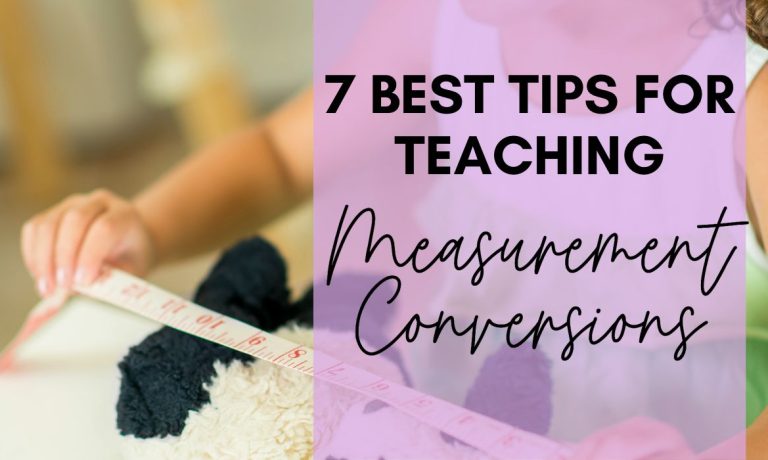Teaching measurement conversions can be a challenging task as it involves not just memorization but also a deep understanding of various math concepts. Measurement conversions are essential skills that students must learn to navigate the world around them. In this blog post, we will explore 7 of my best tips for teaching measurement conversions.
Start with the Basics
Before actually teaching measurement conversions, ensure that your students have a solid understanding of the basic units of measurement. These include length, weight, volume, and time. Students should be able to differentiate between these units and understand how they apply to their everyday lives. It’s important to establish a foundation of knowledge before moving on to more complex concepts.
Use Real Life Examples
One of the most effective ways to teach measurement conversions is by using real life examples. Students are more likely to retain information when they can see the practical applications of what they are learning. For example, you could use recipes, construction plans, or maps to teach conversion concepts. This helps students understand why these skills are important and how they can be used in everyday life situations.
Use Visual Aids
Visual aids can be a powerful tool when teaching measurement conversions. Charts, diagrams, and illustrations can help students visualize how different units of measurement relate to one another. They can also help students understand the steps involved in converting from one unit to another. For example, a chart that shows the relationship between liters and milliliters can help students understand that there are 1,000 milliliters in one liter.
Teach Conversions in Steps
Breaking down the conversion process into smaller steps can make it easier for students to understand. For example, you could teach how to convert from inches to feet by showing how 12 inches make one foot. Once students understand this concept, they can move on to more complex conversions involving fractions and decimals.
Use Mnemonics
Mnemonics are memory aids that can help students remember complex concepts. For example, the acronym “King Henry Died By Drinking Chocolate Milk” can help students remember the order of metric units from largest to smallest (Kilometer, Hectometer, Decameter, Base unit, Decimeter, Centimeter, Millimeter). Other mnemonics can help students remember conversion factors, such as “Big Elephants Can Always Understand Small Elephants” to remember the relationship between kilometers and meters.
Incorporate Technology
Technology can be a helpful tool when teaching measurement conversions. There are many online resources available that can help students practice their conversion skills. You could also use educational apps or games to make learning more engaging and interactive. However, it’s important to remember that technology should not replace hands-on learning experiences.
Provide Practice Opportunities
Practice is essential when learning measurement conversions. Students need plenty of opportunities to apply what they’ve learned and practice converting between different units of measurement. You could provide practice problems, quizzes, or games to help students reinforce their knowledge. It’s important to provide feedback and support as students practice to help them correct mistakes and build confidence.
Differentiate Instruction
Not all students learn at the same pace or in the same way. It’s important to differentiate instruction to meet the needs of all students. This may involve using different teaching methods, providing extra support or challenge for students who need it, or offering alternative assessments. Providing a variety of activities and resources can help engage all learners and promote deeper understanding.
Teaching measurement conversions can be a challenging task, but with the right strategies and tools, it can also be a rewarding one. By starting with the basics, using real-life examples, and incorporating visual aids and technology, you can help your students develop a deep understanding of measurement conversions. Providing practice opportunities and differentiating instruction can help to ensure they have a full understanding.
